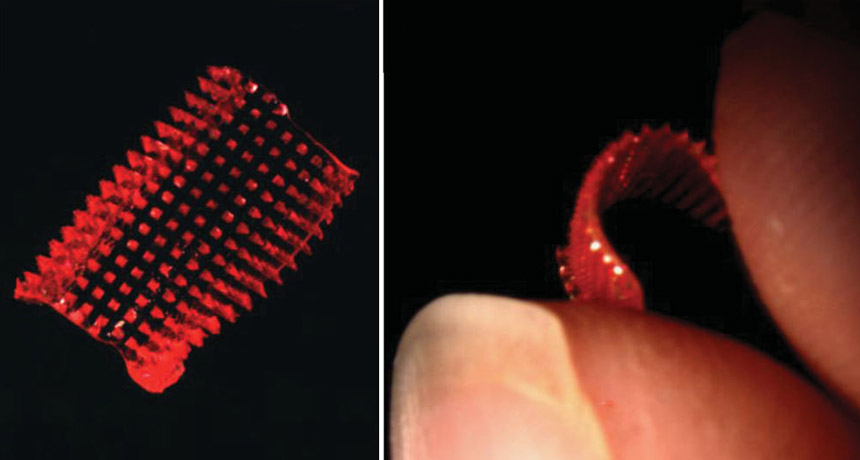Bandage-like patch dissolves to deliver medicine to skin
Water-soluble material helps send complete drug dose into the body

OUCHLESS INJECTIONS A water-soluble backing helps flexible drug-delivery patches dissolve away and inject a complete dose from medicine-filled microneedles (red spikes) into the skin.
K.A. Moga et al/Advanced Materials 2013






